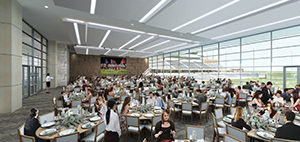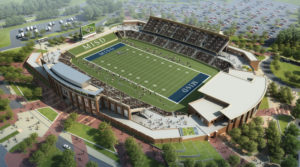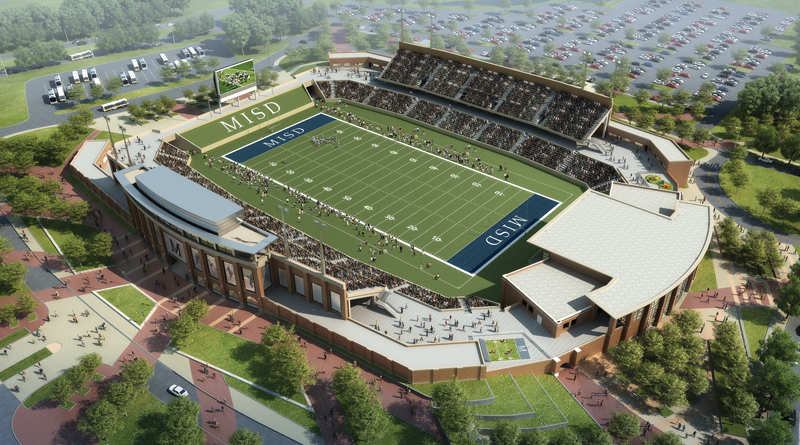For New Texas High School Stadium, It’s Go Big or Go Home
By Daedalus Howell
COLLIN COUNTY, Texas — McKinney Independent School District (ISD) knows its numbers. The Collin County district has 24,500 students in 20 elementary schools, five middle schools, three high schools, two alternative campuses and one early childhood education center. Accounting for administration and support, the district maintains 68 facilities covering more than 4 million square feet on 603 acres of grounds.
Given the finesse with which it deploys digits, it’s no wonder that acquiring $69.9 million for a new high school stadium seemed achievable. It is considered among the most expensive such facilities in the country, competing with Katy ISD’s recently opened Legacy Stadium. This is Texas after all, and bigger is better, hence the new stadium, which will consist of 12,000 seats, 2,000 parking spaces and a community events center. It’s a big project that’s not been without a few speed bumps (namely a $7.1 budget bump up from its original $62.8 million, as reported by the Dallas News), but none that have proven insurmountable.

The district broke ground at a ceremony in December 2016 with school officials, local politicians and at least one big cat mascot present (McKinney High School is “Home of the Lions”). Besides raising the bar for high school stadiums, the district also had to raise the money for such a large financial expenditure — let alone justify it to voters. For stakeholders, the political will aligned with the sweeping changes already occurring in Collin County.
“McKinney has been growing by leaps and bounds, and because of this, we have had to add additional buildings to the district,” said David Spann, McKinney ISD’s chief information officer. “Since 2011, we have added 30 school buildings.”
Spann pointed to a bond election that occurred that year, which the district had originally thought would support the construction of the new stadium. Instead, it ended up going into building new schools. In 2016, the district pursued a subsequent bond election that netted $220 million, a portion of which is being used for the new stadium, which is being constructed by Naples, Fla.-based Manhattan Construction. McKinney’s well-funded school system is unusual in Texas, whose schools, according to U.S. News & World Report, presently rank at No. 41 in the country.
“We have a ceiling of 50 cents for bond debt, and our CFO has a very aggressive payback plan,” said Spann of CFO James Bird, who joined the district in December 2015. “His goal is to continue to reduce the tax rate while maintaining quality facilities for our community. He is so aggressive that we were able to reduce our tax rate by 5 cents. Also, we do 20-year bonds, which is more aggressive than most school systems.”
The McKinney ISD 2016 Bond passed in May 2016, with 62 percent of voters supporting the measure. Naturally, the district knew exactly how many voters to thank: 11,114.
“We are also lucky in that with our incredible growth as a community, property values have gone up as well, which helps us with debt pay down. To help justify the expense, we have designed and built a stadium made of concrete that will be here 75 years from now,” said Spann. “[It] will last indefinitely. The stadium has 12,000 seats, and because we have multiple high schools in the district that will be playing each other in this stadium, both sides of the stadium (the home and away sides) are identical. That way fans will have the same experience whether they are the home or away team.”

The local Booster Club will run an on-site “spirit store,” and the concessions stand will have upgraded credit card technology. There will also be a press box with TVs present as well as guest rooms with displays.
“We can pull images off of the video board and send those images to the displays,” said Spann. “We will also have big monitors in the locker rooms and offices and conference rooms throughout the building.”
Its size notwithstanding, there are many factors that differentiate the stadium project from those at other high schools. For starters, near one of the end zones, there will be an 8,000-square-foot community events center. The space will seat 500 people at banquet rounds or 700 to 800 if it is set up in a classroom configuration. It also will boast floating walls, so it can be divided into three separate rooms. It will also have a wall of glass overlooking the stadium.
To read the entire article, check out the September/October issue of School Construction News.

